The ABC of Sunscreen

Answering (nearly) every sunscreen-related question
Over the last few years, I have talked continuously about sunscreen and how sunscreen is one of the key ways to avoid premature aging. Sunscreen for the win when it comes to healthy aging. I am shocked about the misinformation that is circulating and being shared across social media which is scary; such as SPF 15 is as good as SPF 50. UVA cannot be measured in sunscreen. And these are statements shared by people that sell beauty products. I could crawl into a corner every time I read sentences like these. Hence, I decided to consolidated the most asked questions into this guide. It is long. So get a cup of tea and let's get started.
The aim of this document is to cover every sunscreen question that is relevant when it comes to wearing sunscreen. It is quite a big goal, and I am sure I will think of more as soon as I publish this post. But hey, if I don't post it, it will never get live.
Questions covered:
- How the SPF is determined?
- Suncare SPF higher than on the packaging?
- The higher SPF, the better?
- Why does a product also need to protect against UVA radiation?
- How is UVA measured?
- Do I need to wear sunscreen?
- What should I look for in a sunscreen?
- How much sunscreen do I apply?
- How do I apply sunscreen?
- Does special UV clothing make sense?
- UV protection for city trips, excursions and tours
- How do I apply sunscreen with skincare and makeup?
- How can you stop sunscreen from balling up?
- How do I look less shiny with sunscreen on?
- Can I use [INSERT PRODUCT] instead of sunscreen?
- Can I mix sunscreen with foundation/moisturiser/another sunscreen?
- Can I make my own DIY sunscreen?
- Can I use expired sunscreen?
- Do I need to reapply sunscreen?
- How do you protect your eyes?
- Do I need to wear sunscreen indoors?
- Sunscreen Myth Busting
- How do you recognise high-quality sun protection?
How the SPF is determined
How is the sun protection factor determined? In the laboratory, volunteers (with different skin types) are first examined to see how quickly the skin on their backs reddens under a UV lamp. Then 2 mg of sun cream is carefully applied to a measured square centimeter of skin. The cream is allowed to soak in for a quarter of an hour before the skin is exposed to the UV rays of the lamp again. Now measure how much longer it takes for skin reddening and sunburn to occur.
SUNCARE SPF HIGHER THAN STATED ON THE PACKAGING
It is perhaps good to know that our sun cream has a higher sun protection factor in the tests than is stated on the packaging. For example, our Everyday Sun Cream SPF 50 has an SPF of 60, so we could actually print SPF 60 on the packaging. However, most people generally apply less than the 2 mg of cream per square centimeter of skin. This is therefore already taken into account that you are applying less than required and also potentially not reapplying within the required period. But the cream is still wonderfully light and many describe is more as a fluid than a cream.
The higher the SPF, the better?
Is a higher sun protection factor always better? This needs to be seen in a more nuanced light. No single UV filter provides 100 percent protection. What is more important, however, is that the SPF only says something about protection against UVB radiation. The degree to which a sun protection product protects against both UVA and UVB radiation is much more important.
Why does a product also have to protect against UVA radiation?
Why must a product also protect against UVA radiation? And how is this protection factor specified? UVB radiation reaches the epidermis, UVA radiation penetrates deeper into the skin. Approximately 20 to 30 percent of UVA radiation penetrates the dermis, the middle layer of the skin. UVA radiation is not even blocked by clouds or glass and is present all year round, even in fall and winter. The point is that UVA radiation does not cause sunburn, so the skin does not give a warning signal if you have been exposed to an overdose, as happens with UVB radiation. UVA radiation mainly plays a role in skin tanning, skin ageing and skin cancer. It is therefore important that a sun protection product also protects against this part of the solar spectrum.
HOW IS UVA PROTECTION MEASURED?
There are various test methods to measure the degree of protection against UVA radiation. In Europe, for example, the PPD method (Persistent Pigment Darkening) is used, which is similar to the SPF test. However, it is not the redness that is tested here, but the pigment change and the speed at which the skin tans. As UVA rays are responsible for creating pigmentation on our skin.
The test method involves exposing the skin to UVA radiation. Pigment formation is observed over the next 2 to 24 hours. The same is then carried out on the area of skin that was covered with sun cream. The ratio between the smallest dose of UVA radiation that causes a permanent pigment change on protected and unprotected skin is then the so-called PPD value.
Roughly speaking, a PPD of 10 means that the skin takes ten times longer to tan. However, there are other methods for determining and expressing the degree of UVA protection. These are not carried out on protected and unprotected areas of skin, but are determined on the basis of light transmission, as with UVAPF.
DO I NEED TO WEAR SUNSCREEN?
Listen, I am not your teacher or your mum. If you don't want to wear sunscreen, I cannot make you do anything and you don't need to do anything. I’m not your mum, you don’t need to do anything. However, the official guideline in Germany is are:
| UV Index | Exposure category | Protection measures |
| 1-2 | low | No protection required: You can safely stay outside! |
| 3-5 | moderate |
Protection required:
|
| 6-7 | high |
Protection required:
|
| 8-10 | very high |
Extra protection:
|
| 11 and higher | extreme high |
Extra protection:
|
The World Health Organisation has similar guidelines as well. They’re meant to balance the health risks and benefits of sun exposure – so skin cancer vs the benefits, which is mostly vitamin D production. However, guess what, one always misses one spot so that Vitamin D can still be generated by your body; for example; you can simple not apply sunscreen across your entire scalp.
Related post: Sun Protection and Vitamin D Deficiency
If you’re trying to improve your skin and deal with skin concerns like uneven pigment, premature aging (i.e. fine lines and wrinkles) – which I’m guessing you probably are, since you’re here – then you probably should wear sunscreen on your face every day if you’re going outside regardless of the UV index.
The sun’s UV is the biggest preventable cause of skin aging and pigmentation. Prevention is much easier than trying to undo the damage later. And typically it is much cheaper as well – especially when it comes to deeper damage that you’ll need procedures to tackle, such as multiple laser treatments and not just skincare.
There’s actually a study that found that skin texture, clarity and pigmentation improved with just wearing sunscreen daily. Remember, your skin has the ability to repair itself if you cut down the external triggers that it has to fight of in addition.
In some cases, sunscreen becomes in particular important. Ingredients such as alpha hydroxy acids like glycolic and lactic acids. Why is it more important to wear sunscreen when you are applying these ingredients? As they can make your skin more sensitive to UV rays. If you are not wearing sunscreen as well, your anti-ageing skincare can actually make you age faster.
WHAT SHOULD I LOOK FOR IN A SUNSCREEN?
SPF
Let's start to look at SPF. SPF tells you how well the sunscreen protects against burning, which is mostly to do with shorter wavelengths of UV called UVB. These are also the most damaging rays of UV. They cause skin cancer and premature skin aging.
Higher SPF is better, the protection you get is proportional to the SPF number. That’s why the SPF ratings were designed the way they are, the whole SPF 50 is only 1% better than SPF 30 thing is a myth.
For most people, SPF 30 is enough for an everyday sunscreen, but you might want higher protection if you’re getting a lot of sun, or you just want higher protection. The downside of higher SPF is that the formulas can be thicker and less nice to wear, but this has been improving a lot in the last 5 years. And you can certainly experience this with our SPF 50+ Everyday Sun Cream.
UVA protection
UVA protection is also important. UVA refers to the longer, lower energy wavelengths of UV that cause less burning, but are still linked to skin aging, cancers and increased pigment production.
Related post: Protect your skin from UVA and UVB
UVA protection is a bit trickier than SPF, because there isn’t really a universally agreed-upon way of measuring UVA protection, and some countries don’t let brands show more detailed UVA protection numbers.
There are a lot of different labels used in different places – basically you want to go for at least “broad spectrum”, or as high as possible for PPD, PA or Boots Star Rating. In Germany, and across Europe, If you care a lot about hyperpigmentation or premature aging, you might want to look for the UVA protection seal on a product. That confirms that is has a UVA protection of one third of the SPF. Our SPF 50 Everyday Sun Cream meets this high-requirement.
Water Resistance
Water resistance is the final special sunscreen label that’s regulated. It tells you how much SPF protection is left after sitting in water for a particular amount of time.
In general, more water resistant sunscreens are also more resistant to sweat, sand, rubbing, and movement. So it’s a good idea to use water resistant sunscreen if you’re going into the water (obviously), or just moving around a lot while getting sun exposure.
Water resistance is also a bit tricky because different regions use different rules.
Enjoyment
Aside from protection, it’s really just personal preference, with things like texture, white cast, skin sensitivity and cost. You need a sunscreen that you enjoy enough to apply regularly, and that you can afford to apply regularly, because you do need to use quite a lot of sunscreen.
Texture is incredibly important and underrated. If you enjoy it, you will wear it.
There’s a lot of talk about chemical and physical sunscreens and how physical works different than chemical. But recent studies showed that actually both work in a quite similar way.
Related post: Chemical vs Physical Sunscreens: The Science (with video)
My very general rule of thumb is:
- If your biggest problem with sunscreen is texture or white cast, I’d recommend trying a organic sunscreen first.
There are also combination sunscreens which have a mix of filters. But I am not sure what they really solve as they are still uncomfortable to wear, leave potentially a white cast and if you are a physical filter fan than why would you want your beloved mineral filter mixed with an organic one.
They tend to be somewhere in between the two for texture and white cast.
HOW MUCH SUNSCREEN DO I APPLY?
Two milligrams of sun cream or spray per square centimeter of skin is considered optimal according to international standards. Converted, this would be around 200 milliliters per person per week of vacation. A small guide: For an adult, 30 milliliters is calculated for the whole body, which corresponds to about six teaspoons of cream.
However, almost everyone uses too little, which means that the products cannot develop their full effect. If you use cream, you should use a minimum amount for each part of your body, from the base of your hand to the tip of your middle finger. If you prefer sun spray, you should calculate about 15 sprays for each body area. Don't just spray the spray on, spread it well afterwards!
So how can we simplify this?
To get the SPF on the label, you need to apply 2 mg per square centimetre. This works out to be a bit less than 1/2 teaspoon for your face + neck, for most people, and it can be equivalent to two fingers full which is for your face only. And three fingers if you want to cover your neck as well.
Since it depends on your face size, the actual amount will be different for everyone. You can try to measure your face but it’s a bit of effort, so if in doubt aim for 1/2 teaspoon.
Why do you have to apply that much? As your skin is a valley. It is bumpy not even, with groofs and corners. If you don’t apply enough product, the sunscreen sits in the valleys on your skin, and the hills don’t get covered, or the layer is too thin. Hence general practice is as well to reapply in case you are not applying enough and to go for a higher SPF - so in case you have applied too little that if you are using a SPF 50, you still have SPF 30. Yes, it is a little bit tricking yourself but we are not perfect and we make mistakes, are in a rush etc. Hence, I always suggest to use a SPF 50 during Spring and Summer.
Only 25% of the SPF?
Research indicates that much less is being applied: only between 0.5 and 1.3 mg/cm2. This is between 25% and 65% of the protection factor indicated on the bottle. On average, sun protection cream users are less protected than they realize. If you are using an SPF 15 and you apply 0.5 mg/cm2 it means that you are only receiving 25 % of that SPF. This is not very much. So if you spend a whole day in the sun with, in reality, only an SPF factor 4, it is no wonder you have changed colour or burned.
HOW DO I APPLY SUNSCREEN?
It is always better to apply sunscreen before going to the pool or beach. On the one hand, there is still enough time for the sunscreen to take full effect, and on the other hand, too little cream is usually applied directly on site to avoid any possible residue on (swim) clothing. However, this can have fatal consequences, as sunburn is particularly common on the edges of bikinis or swimming trunks. And even swimwear itself does not usually offer reliable protection, which means that the skin should also be creamed underneath the clothing.
Another important aspect of sun protection concerns the so-called sun terraces. This refers to the areas of the body that are directly exposed to the light, i.e. forehead, nose, ears, shoulders, back of the feet, knees and décolleté. Anyone with short hair or a ponytail is particularly susceptible to sunburn in these areas. It is not without reason that the sun terraces are among the most common areas where light skin cancer occurs. They should therefore never be forgotten when applying sunscreen.
Now for actually applying sunscreen! I think it’s really helpful to remember that sunscreen works best when it’s in a smooth, even, undisturbed layer.
Apply sunscreen on your skin after skincare, regardless of what type of sunscreen it is – organic sunscreens don’t need to absorb into bare skin to work.
Try to make sure the sunscreen is evenly spread over your skin – you can dab it on the different parts of your face at the start.
You don’t want to rub too much. There’s a study showing that rubbing reduces protection. So apply it evenly and then let it dry down, don’t rub it in the whole time.
You should also apply all sunscreens before you go outside. Sunscreens don’t need time to activate, but they do need time to settle down and not get wiped off onto your clothes, or get disturbed too much by you moving – it’s a lot like wet paint. The recommendation is usually 15 minutes, but it depends on the sunscreen. In one study the sunscreen they used only needed 8 minutes.
So again, when we say apply it 20 minutes before is to accomodate when you forget and only have ten minutes to run out that you still have the protection you need.
DOES SPECIAL UV CLOTHING MAKE SENSE?
Experts have differing opinions on this topic. In the water, for example when surfing, snorkeling or kiting, it is certainly a good addition to sunscreen. When buying UV protective clothing, however, you should make sure that it is breathable and quick-drying.
UV PROTECTION FOR CITY TRIPS, EXCURSIONS AND TOURS
Sun protection factor 50 is a “must” when traveling. It allows you to be exposed to the sun 50 times longer than your skin's natural protection. The actual time depends on the individual skin type. People with very fair skin, who normally turn red after just five minutes, can achieve protection for 250 minutes with SPF 50, which is sufficient for a half-day outing, for example. The limit should only ever be used up to a maximum of two thirds.
If you are unsure which protection factor is sufficient, you should check the UV index of the weather app on your smartphone. From UV index 3, you should use sun cream if you want to spend time outdoors.
The current data is also published on the bfs.de website.
Incidentally, it is important not to be stingy with the dosage, because if you apply the cream or spray too thinly, you risk lower UV protection. Under certain circumstances, SPF 50 may then become SPF 25.
Incidentally, nobody needs to worry about unsightly residues or discolouration on clothing these days. Many sunscreens hardly leave any stains and/or are easy to wash out.
HOW DO I APPLY SUNSCREEN WHEN I’M ALSO WEARING SKINCARE AND MAKEUP?
Sunscreen makes the most sense in between skincare and makeup – so your skincare can sink into your skin and not mess up your sunscreen, and so your sunscreen doesn’t mess up your makeup.
Again, I think it’s really helpful to remember that sunscreen works best when it’s in a smooth, even, undisturbed layer.
There aren’t a lot of studies done on wearing sunscreen with other products, but based on studies for other situations, it seems like anything under the sunscreen, but especially on top of the sunscreen, can mess up your sunscreen layer.
So try to minimise the amount of skincare you use under the sunscreen (keep it to one or two products), and minimise the makeup you use on top of the sunscreen. Again, try to wait for the sunscreen layer to flatten down and stick to your skin before you apply your makeup – maybe 5 to 10 minutes – and try to apply your makeup as gently as possible.
It’s probably also best to use a sunscreen with a higher SPF than you need, so if it drops you’ll still be getting the SPF you want.
And ideally, you don't apply make-up on top of your sunscreen. As you will rub it around and might remove the sunscreen where it has settled. So your last step is your sunscreen.
HOW CAN YOU STOP SUNSCREEN FROM BALLING UP?
When sunscreen balls up, it’s usually
A. interacting with your skincare
B. drying too fast, or
C. you’re rubbing it too much
So you can try
A. applying it on bare skin
B. applying it on massively moisturised skin, or
C. patting it on gently
Unfortunately my skin is really oily, and sometimes my own face oil is actually what’s making it ball up, and people with dry skin have no problems with the same sunscreen.
HOW DO I LOOK LESS SHINY WITH SUNSCREEN ON?
A lot of sunscreens are oily, because a lot of sunscreen actives are oils or dissolved in oils. So if you blot away the oil, you’re probably going to remove some sunscreen too.
The best way I’ve found to reduce shine without lowering the protection too much is to wait for the sunscreen to set, then gently pat translucent powder on top. I like starch-based powders for this.
CAN I USE [INSERT PRODUCT] INSTEAD OF SUNSCREEN?
You might have some products that say “SPF” on them and you’re wondering if you can use them instead of sunscreen – the answer is usually no.
The main thing to remember is you need to apply about ¼ teaspoon on your face, and some products just don’t really work that way
Hats and umbrellas aren’t too bad. However, most of the UV you get actually gets bounced from the sky rather than coming directly from the sun, so the lower parts of your face get less protection.
So hats and umbrellas are good to use in conjunction with sunscreen to add extra layers of protection. Think of it like layers of Swiss cheese: layering enough types of imperfect protection will give pretty good protection overall.
CAN I MIX SUNSCREEN WITH FOUNDATION OR MOISTURISER OR ANOTHER SUNSCREEN?
It’s best not to mix sunscreen with foundation. Even though it can make it feel nicer, get rid of white cast, make your routine faster, it changes the way the sunscreen dries, which can mean you get holes in your protection.
Sunscreens are emulsions. If you have the wrong proportions, the emulsion can break and separate. If you’ve ever seen how foundation can bunch up if you apply it over the wrong product – the same thing can happen to sunscreen, and if it’s happening on a microscopic level you won’t be able to see it.
It’s best to just look for a sunscreen that already does what you want: if you don’t want white cast go for a chemical sunscreen, if you want a tint go for a tinted sunscreen.
Even worse are those “sunscreen drop” products you’re meant to mix into a moisturiser to make your own sunscreen. This means you have this holey film issue, plus you end up applying so little that you end up with really low SPF. And then you really don't need to bother at all and can safe your money as you do no good to your skin with sun drops.
CAN I MAKE MY OWN DIY SUNSCREEN?
So I mentioned the “sunscreen drop” products that you mix into other products end up with really low protection and unreliable film formation.
There’s also DIY sunscreen recipes online that involve mixing zinc oxide powder or diaper cream into oils or moisturisers to get 20% zinc oxide, which matches the concentration in a store-bought sunscreen.
This doesn’t work, because protection isn’t just about the percentage of zinc oxide, but also how it’s distributed in the sunscreen and how that applies on the skin.
Sunscreen uses special grades of zinc oxide with very small particles – this makes it absorb more UV, and it can cover a larger area.
Even with 20% of special zinc oxide, mixed with industrial equipment that can make the zinc oxide spread out in the product evenly, sunscreen formulators still get low SPFs sometimes because the base isn’t keeping the zinc oxide spread out when you apply it onto your skin. So if sunscreen formulators can’t do it consistently with all of this special stuff, the chance of you getting it right consistently at home with the wrong kind of zinc oxide is… not great.
CAN I USE EXPIRED SUNSCREEN?
There’s no guarantee the sunscreen will be working after the expiry date, so I’d recommend throwing expired sunscreen out.
Also don’t store sunscreen in the heat – it can break down and separate even before it expires, which means it won’t give you even protection. So don’t store it in your car glovebox, and if you’re at the beach or at the park try to keep it in the shade.
DO I NEED TO REAPPLY SUNSCREEN?
The reason you need to reapply sunscreen is that the sunscreen layer gets less even over time. Like foundation, the sunscreen layer clumps up over time because your skin is moving, and producing sweat and oil underneath. That means you’ll start getting tiny gaps in your sunscreen layer that UV can get through.
Some of the sunscreen also evaporates into the air and absorbs into your skin, so the sunscreen layer gets thinner and less effective.
Sunscreen can also get wiped off onto things, and if you get wet the sunscreen layer can also clump up, even if it’s water resistant.
So after you’ve had your sunscreen on for two hours, you’re probably not getting the labelled protection anymore, which is an issue if you’re about to get more sun exposure.
Important note: this is 2 hours of the sunscreen being on your skin, not 2 hours of sun exposure. There’s this misconception that reapplying sunscreen is because the sunscreen ingredients stop working after absorbing too much sun. This is a myth – most sunscreens are pretty photostable now, in particular ours, so the ingredients almost always keep working for longer than the sunscreen film takes to clump up.
This 2 hours is also just a general rule. There’s evidence that some sunscreens can last a lot longer. And obviously if you’re sweating or moving around a lot and your sunscreen isn’t water-resistant, it probably won’t be staying put. If you aren’t moving around a lot, you probably still have pretty decent protection after a few hours, but no one’s tested the protection for a wide range of sunscreens so it’s hard to say. And unfortunately you can’t really rely on what you see with a UV camera – UV cameras don’t have high enough resolution to tell what’s going on. One study found that the UV photo looked exactly the same even with around 15% lower SPF.
HOW DO YOU PROTECT YOUR EYES? YOUR EYES NEED PROTECTION TOO?
If you are out and about in the mountains, you should never go without sunglasses. The intense UV-A radiation can cause massive and lasting damage to the lens. But the conjunctiva also reacts to too much sun. If your eyes water after the tour or are very red, the ophthalmologist will administer drops containing cortisone.
It is also important not to wear “just any” sunglasses. A recommended model offers reliable all-round protection against all incident rays, including those coming in from the side.
The fine skin of the eyelids also needs sun protection! Either with the shade of a wide-brimmed hat or with good quality sunglasses!
DO I NEED TO WEAR SUNSCREEN INDOORS?
For most people, probably not – you probably aren’t getting enough UV inside your house. Window glass blocks almost all the UVB, but UVA still comes through, and that can potentially cause premature aging and pigment. But the roof and the walls are probably blocking the vast majority of it, unless you have sunlight directly hitting your skin through a window, or if you’re right next to a big window and you can see lots of sky through it.
Monitor and phone screens don’t produce enough damaging light to worry about unless you have a special condition (you would know if you had one). Fluorescent lights also don’t produce much UV if they’re properly shielded, maybe be careful if you have a bare bulb, particularly an old curly one.
SUNSCREEN MYTH BUSTING
There are a ton of other myths about sunscreen that I haven’t covered, and I’m sure there’ll be even more to come, but here’s a list of myths that I’ve debunked before. Here is my attempt to speedrun the more common ones in 20 words or less each:
Organic sunscreens are dangerous hormonal disruptors: Legal limits based on all relevant data in context, with large margin of safety; fear-mongering sites show selective studies only.
Related post: Overview of filters and what to look out for
Organic and inorganic (=physical / mineral) sunscreens work differently: Both work in the same way, only 5–10% UV is scattered by organic and inorganic sunscreens, the rest of the UV-rays are being absorbed and turned into heat. Sorry to bust the bubble. But they work in the same way. And I want to stop the fear-mongering.
Physical sunscreens work better: How well sunscreen works depends on SPF and UVAPF; organic sunscreens can get higher SPFs and UVAPFs. I am not a fan of physical as they dry out the skin.
Heat from organic sunscreens is bad for melasma: organic and physical sunscreens produce around the same amount of heat, and that amount is undetectable.
Sunscreens are killing coral reefs: Climate change, agricultural pollution, overfishing are killing reefs; way too little sunscreen in ocean to make a difference. But our sun filters are not including microplastic or causing any damage to the environment.
HOW DO YOU RECOGNISE HIGH-QUALITY SUN PROTECTION PRODUCTS?
This is not always easy and consumers are often blinded by the prices of discount stores. But even pharmacy brands often contain raw materials that are no longer up to date. If you want to use good sun protection products, make sure that the product is octocrylene-free. Octocrylene is a very inexpensive UV filter, but it is suspected of having a hormonal effect and is ecologically very questionable. Octocrylene is also suspected of accelerating the death of reefs.
The two UV filters ethylhexyl methoxycinnamate and butyl methoxydibenzoylmethane should also no longer be combined in a modern UV protection product. Both UV filters degrade when exposed to UV light (are photoinstable) and thus release degradation products that are toxicologically questionable. The two UV filters homosalate and ethylhexyl salicylate are only weakly effective and are also suspected of having a hormonal effect.
Avoid using waterproof sun protection products. These sun protection products contain polymeric film formers, which are now classified as microplastics. These raw materials can be recognized by the INCI designations -acrylates, VP/hexadecene copolymer, VP/eicosene copolymer, C8-22 alkyl acrylates/methacrylic acid crosspolymer, styrene/acrylates copolymer, polyester-7, polyamides, acrylates/C12-22 alkyl methacrylate copolymer and acrylates/vinyl neode Vinyl Neodecanoate Crosspolymer.
However, it's not just about avoiding microplastics, we also need to get used to simply reapplying cream after being in the water. This is the only way to ensure optimum protection.
This is how you choose the right sunscreen
For any consumer it is hard to find the right skincare. For years now I have been delving into the information about sun care and skin care. And I believe in the importance of good sun care and skin care but, at the same time, I am shocked by the sense and nonsense within the cosmetics world. In particular when it comes to sun care. Terminology being missed used, information being tweaked to meet the marketing slang, DIY sunscreen recipes, fear mongering across the industry to fuel the anti-sunscreen movement. It is mind-boggling what is happening and yet everyone is copying each other's words and no one really wants to open their eyes to see what is really happening...
Two things to consider when it comes to sunscreen
I have already written a blog about ‘Filters to Avoid’. And you can read about it here.
What should your Sun Strategy Look like?
Recently I have had many questions asking what the best sun cream is. And I am biased to this question. Of course, I will favour NAYA's Everyday Sun Cream SPF 50 as I know what is in there, I know the suppliers and the ingredients from the source to the bottle and I know it works and does its job. But, if you yourself have products that meet the above conditions, you can always e-mail the ingredients list of these to me on support@nayaglow.com - and I will have a look.
But having a good sun cream alone is (unfortunately) not enough:
- Use a minimum of SPF 50 and I have and will always suggest to use SPF 50 when it comes to your hands and face. As we all do not apply enough on our face.
- Apply a sufficient amount. For your face you should use at least half of a teaspoon (read more).
- Stay out of the sun at the hottest time of the day - midday.
- Wear a hat. And don't forget sunglasses for the delicate eye area.
- Apply every two hours, and extra if you have exercised.
- It’s best not to use a spray.
- Choose products with a good filter and without irritating substances. Visit our No-No-List
And above all: enjoy the sun. We all need to feel the sun on our skin. It creates dopamine which makes us feel good and of course it is one source of many to generate Vitamin D.
FINAL THOUGHTS
Sun protection is not only important from a cosmetic point of view, because unfortunately our skin does not forgive mistakes. Too much sun exposure causes it to age earlier ... and in the worst case can lead to skin cancer. At NAYA, we developed a high-quality sun protection for you according to your wishes. So that we can all continue to enjoy the sun (in moderation).
Discover it today: Everyday Sun Cream SPF 50+
Test your knowledge in our Skin Quiz. (in english only for now)

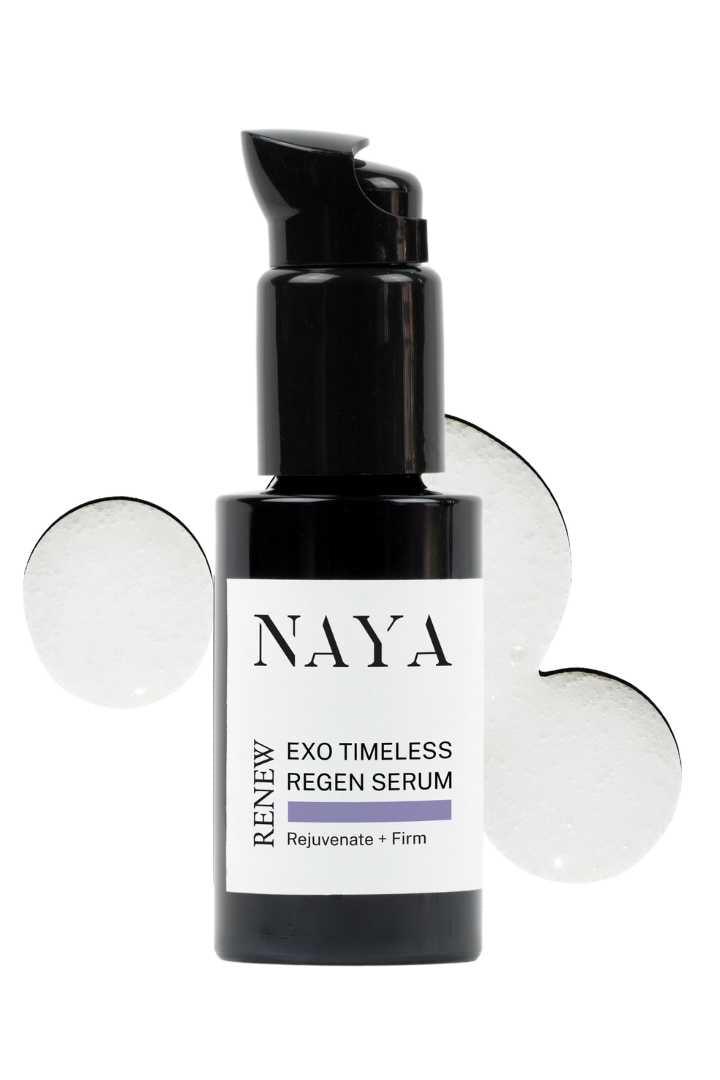
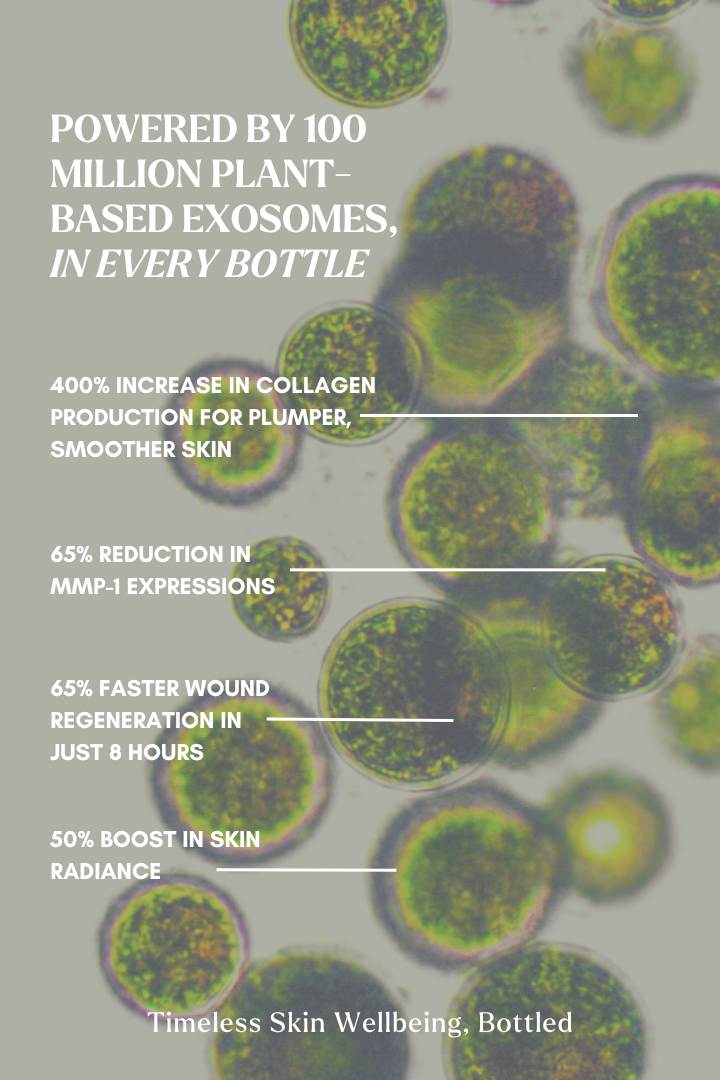
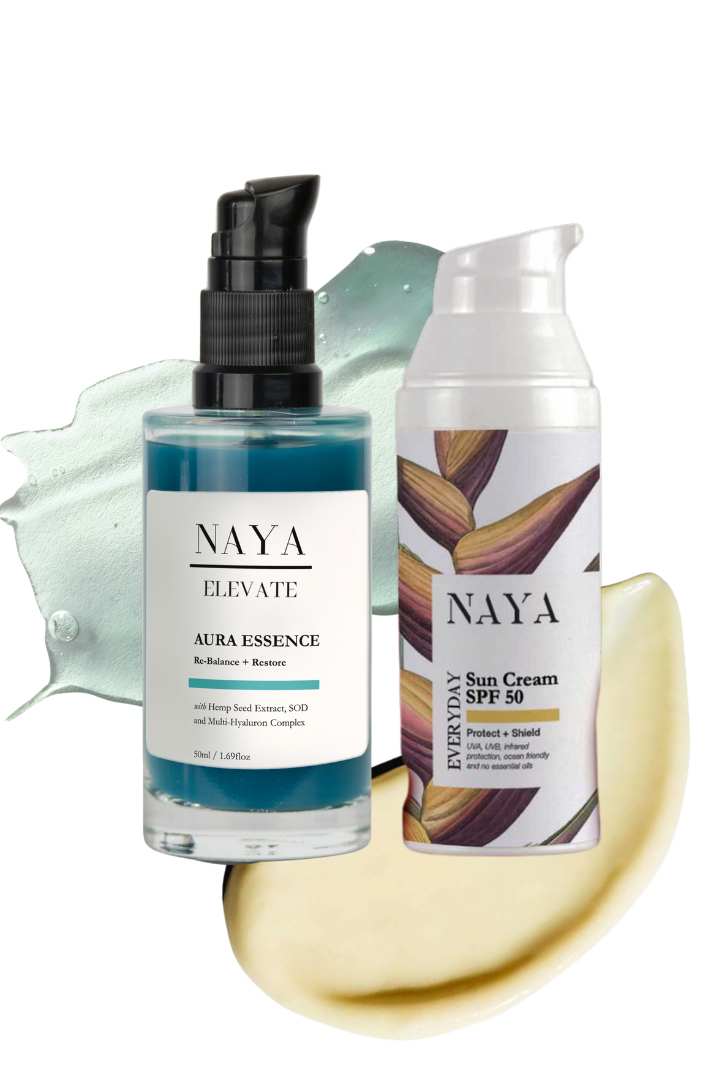
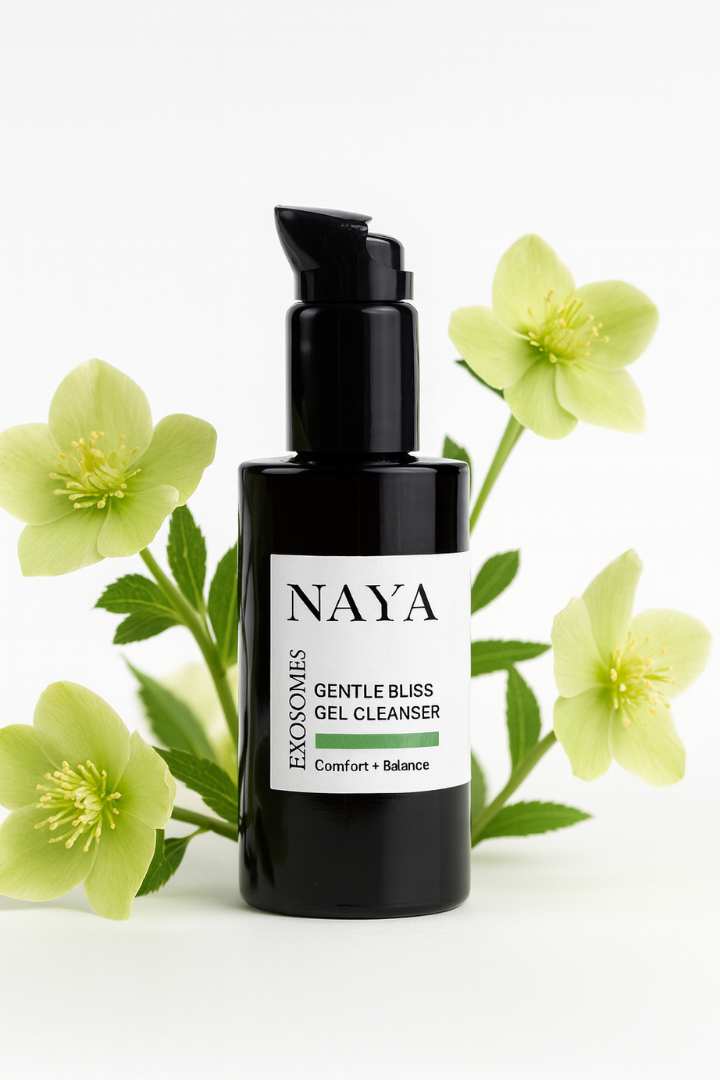
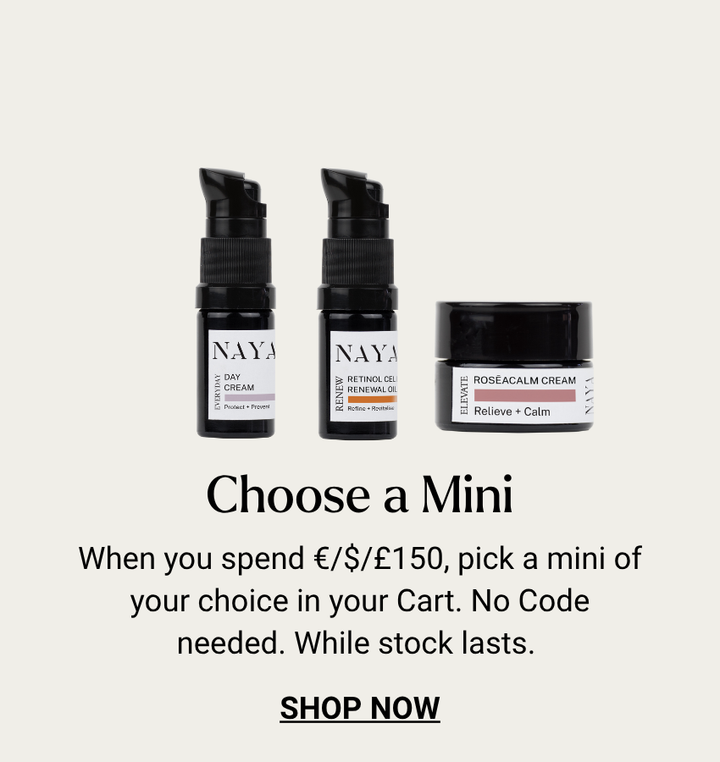
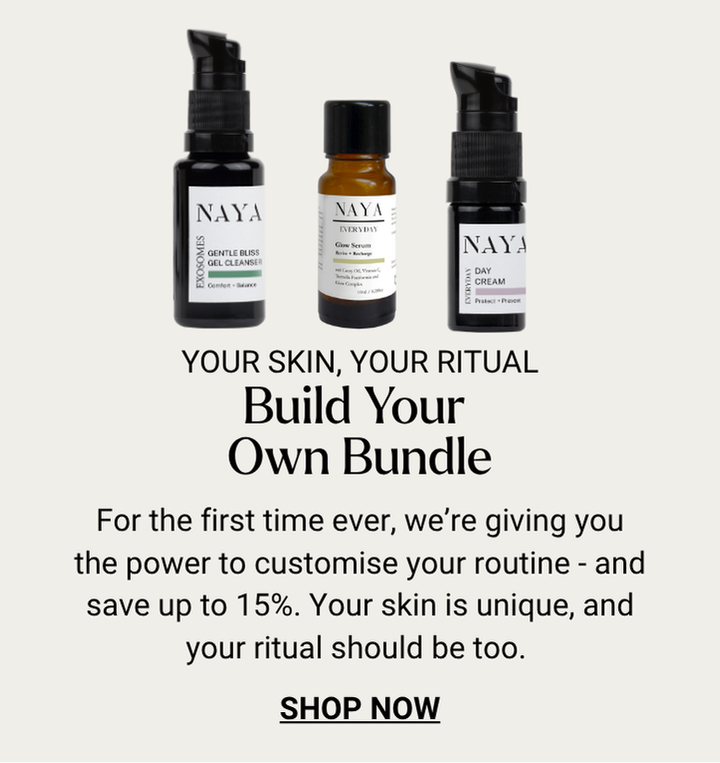

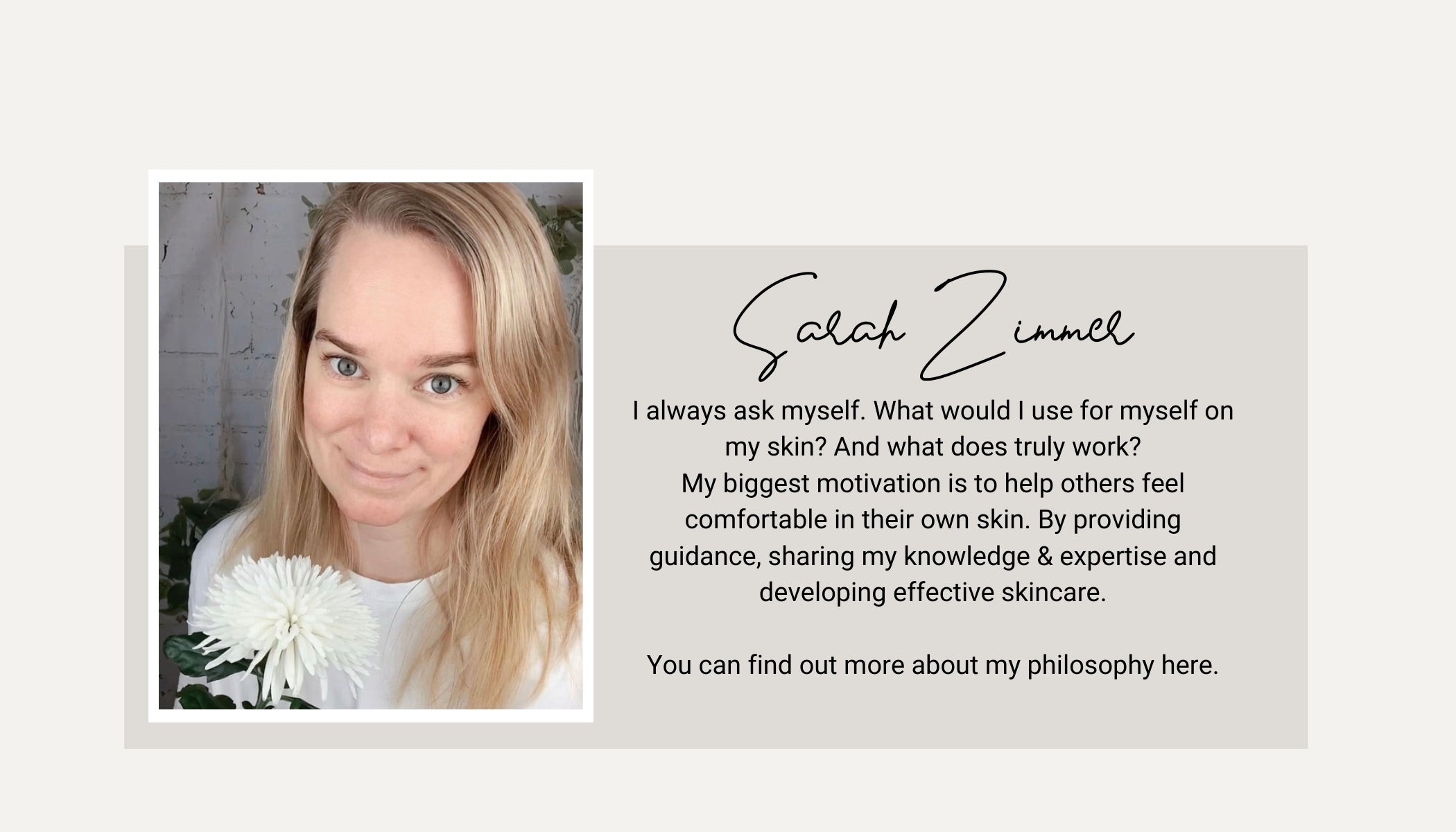



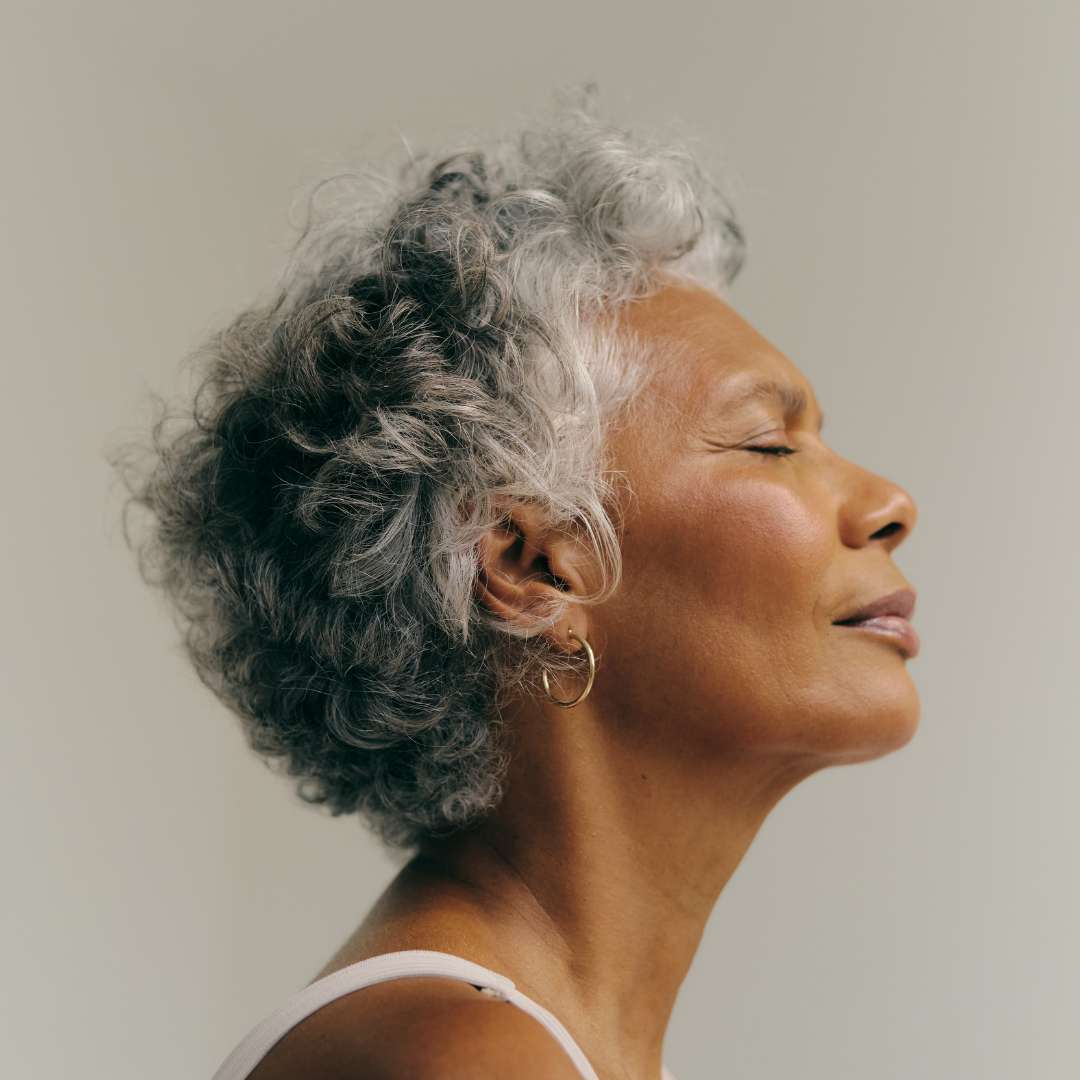
Leave a comment